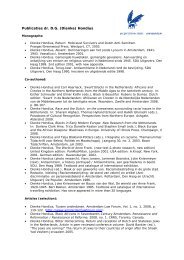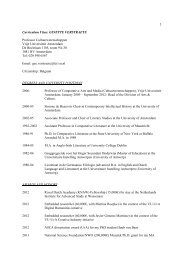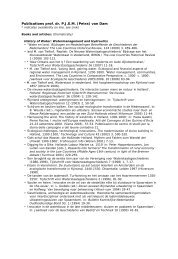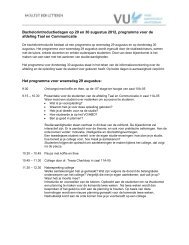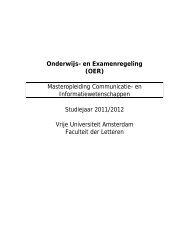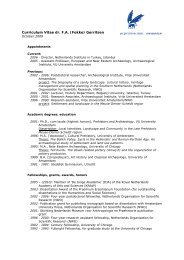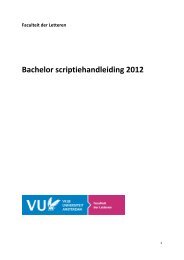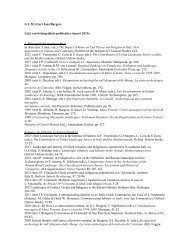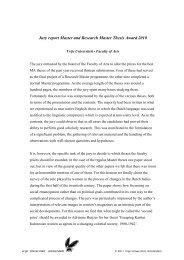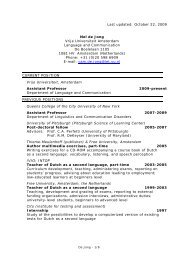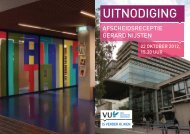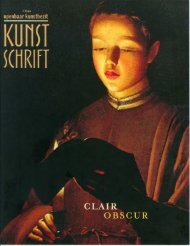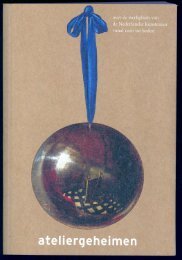Create successful ePaper yourself
Turn your PDF publications into a flip-book with our unique Google optimized e-Paper software.
affio [sic], as an admirer and witness of hls master's deviant and revolutionary<br />
ideas. The sixth chapter is entirely devoted ro h is diary in which hè<br />
jotted down Leonardo's pieces of artistic wisdom, and his recommendations<br />
and formulas. In one of his more extensive notes hè relatcs<br />
Leonardo's explanation of how one should depict the Delugc. In the<br />
English translation of 1931 this note reads as follows:<br />
'Discoursing of how an artist ought to compose the ideas for pictures,<br />
the master told us, by wayof an example, of a representation of the delugc<br />
that hè had conceived: 'Abysses and maelstroms, lit up by lighcnings.<br />
Branches of enonnous oaks, with people clinging to them, carried<br />
along by a waterspout. Waters, strewn with fragments of household<br />
furniture, upon which people seek to save themselves. Hcrds of<br />
quadrupeds, surrounded by water, on high table-lands, — some with<br />
their Icgs on the backs of others, crushing and trampling one another. A<br />
horde of people, defending, with arms in. hand, the last patch ofground<br />
from fcral beasts. Some are wringing their hands, gnawing them so that<br />
the blood runs; others stuff their ears so as not to hear the rumble of the<br />
thunder-sbocks; or else, not content with having shut their eyes, place<br />
one hand atop the other, pressing them to their eyelids, in order not to<br />
see their impending death. Some commk suïcide, suffocating, strangling<br />
themselves, impaling themselves upon swords, casting themselves<br />
into the raging deep from cliffs; and mothers, cursing God, seize their<br />
children to smash their heads against stones. Decomposed corpscs float<br />
up to the surfacc, colliding with and striking one another, and rebounding<br />
like little balls inflated with air. Birds perch on them; or,<br />
sinking down from exhaustion, descend on the living men and animals,<br />
finding no other place to rest.'15<br />
Kandinsky himself refers to a German transiation in U b er das Geestige.16<br />
Although hè does not mention the passage about the deluge, hè can hardly<br />
not have known it. Given Kandinsky's belief in past and future cultural<br />
revolutions, this passage must have sounded like a call to arms.<br />
Merczhkovsky's novel may have inspired Kandinsky to deal with the theme<br />
of the deluge, or at any rate stimulatcd his interest in it.17 Yet to what extent<br />
was the novel helpful to him in finding a suitable formal idiom? His<br />
earlier, paraphrased description of the origins of Composïtion VI proved<br />
that in around 1913 Kandinsky had already experienced a great deal of<br />
difficulty in depicting the story of the deluge. In the earlier littie painting<br />
on glass based on the same subject (fig. 3) hè stïll included 'various figurativeforms,<br />
partlycheerfulones (Igotalotof pleasureout ofcombining the<br />
serious forms with cheerful external images): naked figurcs, arks, animals,<br />
palm trees, lightning flashed, rain, etc.'.18 But with regard to more serious<br />
forms of art — hè had made the glass painting more for his own pleasure<br />
/icS Paul van den Akker



